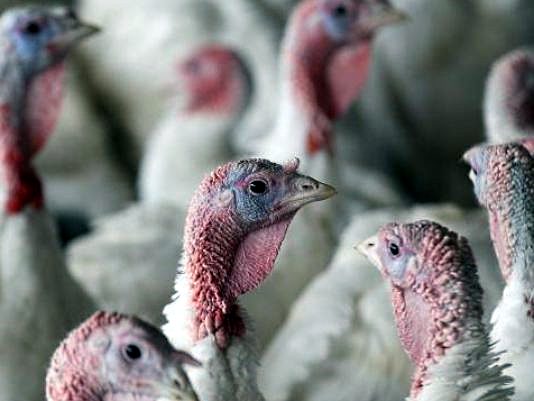Deadly H5N2 virus has now spread closer to area – and to chickens

The count in Minnesota is now up to 26 turkey farms across the state that have been affected by the deadly H5N2 Avian flu virus – including two in southeastern Cottonwood County, as well as another Watonwan County farm. Plus, the disease is now showing up in counties where it had not appeared before, including two farms in Swift County, and farms in Le Sueur and Redwood Counties. Interestingly, the presence of this flu in in the state is notable because the cases are so geographically spread out they are seemingly unrelated. State Veterinarian Bill Hartmann told the Associated Press that he expects more farms to be hit before the threat recedes.
In fact, the virus is spreading across the Upper Midwest, showing up at commercial turkey operations in both South Dakota and North Dakota, along with Iowa.
As well as spreading to turkey farms, the strain has also spread to chickens, after it was confirmed that the H5N2 strain was found on a commercial chicken farm in Wisconsin and at a farm in Osceola County in northwest Iowa. The United States Department of Agriculture (USDA) reported that the Iowa chicken farm holds almost 10% of the state’s egg-laying chickens, with up to 5.3 million hens needed to be destroyed.
Those birds not killed by the virus will be euthanized to prevent the spread, bringing the total losses in Minenesota to 1.5 million birds – to date. Although this number is a small fraction of the total number of 240 million turkeys produced in Minnesota each year, farmers have started counting the cost of the virus to that industry already, with reports of losses standing at a combined $15.7 million since the outbreak began.
The USDA says turkeys from these flocks will not enter the food system, and note that the risk to humans is low. No infections in people have been detected.
History of the avian flu
Minnesota Public Radio (MPR) News has gathered historical information on the rise and spread of this flu virus strain.
What reporter Lorna Benson learned is that the deadly virus, that has, as of to date, wiped out nearly 5% of the state’s turkey industry, is indeed part of a worldwide disease – and that scientists still do not fully understand it.
“After emerging in Asia, the avian flu spread to poultry farms in the Netherlands, Great Britain, and Germany.
“Its quick arrival in North America has alarmed scientists who are trying to unravel the mystery of how these deadly bugs have infected so many turkey farms in such a short period of time.
“A popular theory among many scientists suggests that wild waterfowl are depositing the virus across the landscape in their feces as they migrate north.
“The North American version of the virus has changed slightly since arriving in the United States from Europe, but its lethal effects on poultry are the same.
“Besides wild ducks and geese, the new viruses have also been detected in live coots and cranes. But there are thousands of other bird species that have yet to be tested for the virus.
“Another theory suggests the viruses may have changed in a way that makes it easier for wild birds to catch and carry the poultry flu strains.
“Biosecurity mistakes are thought to be a likely method of disease introduction at many of the turkey farms. State and federal investigators also are looking at the possibility that strong spring winds could have made the flu problem worse – at least in some locations.
“Avian flu isn’t typically spread across great distances by wind, but some researchers say it’s possible the virus could have been blown into turkey buildings, if it was attached to field debris or feathers.”
“Keeping avian influenza out of poultry barns may require periods of total lockdown during the spring and fall wild bird migration seasons. That could last for years – as long as new viruses are circulating.”




















